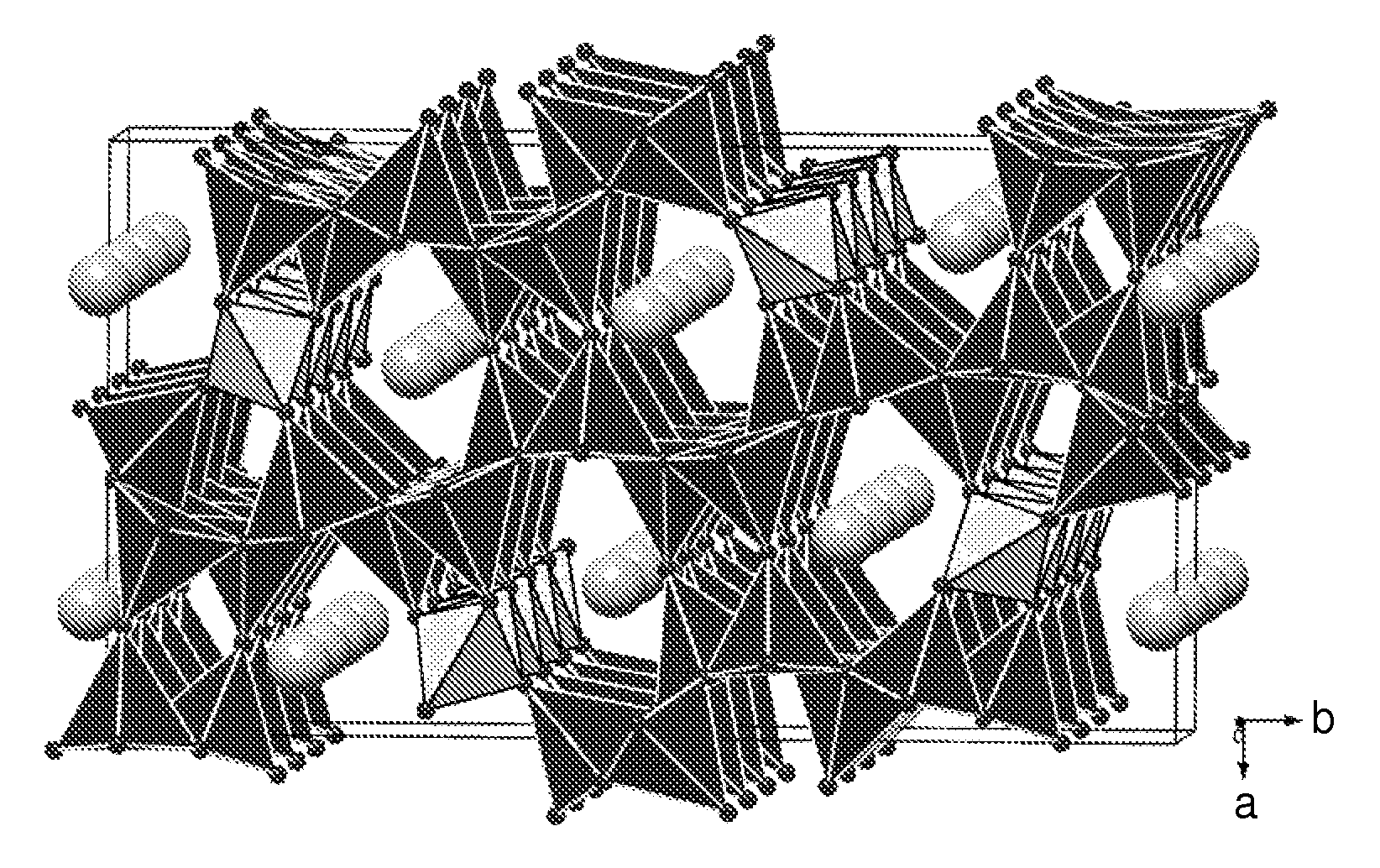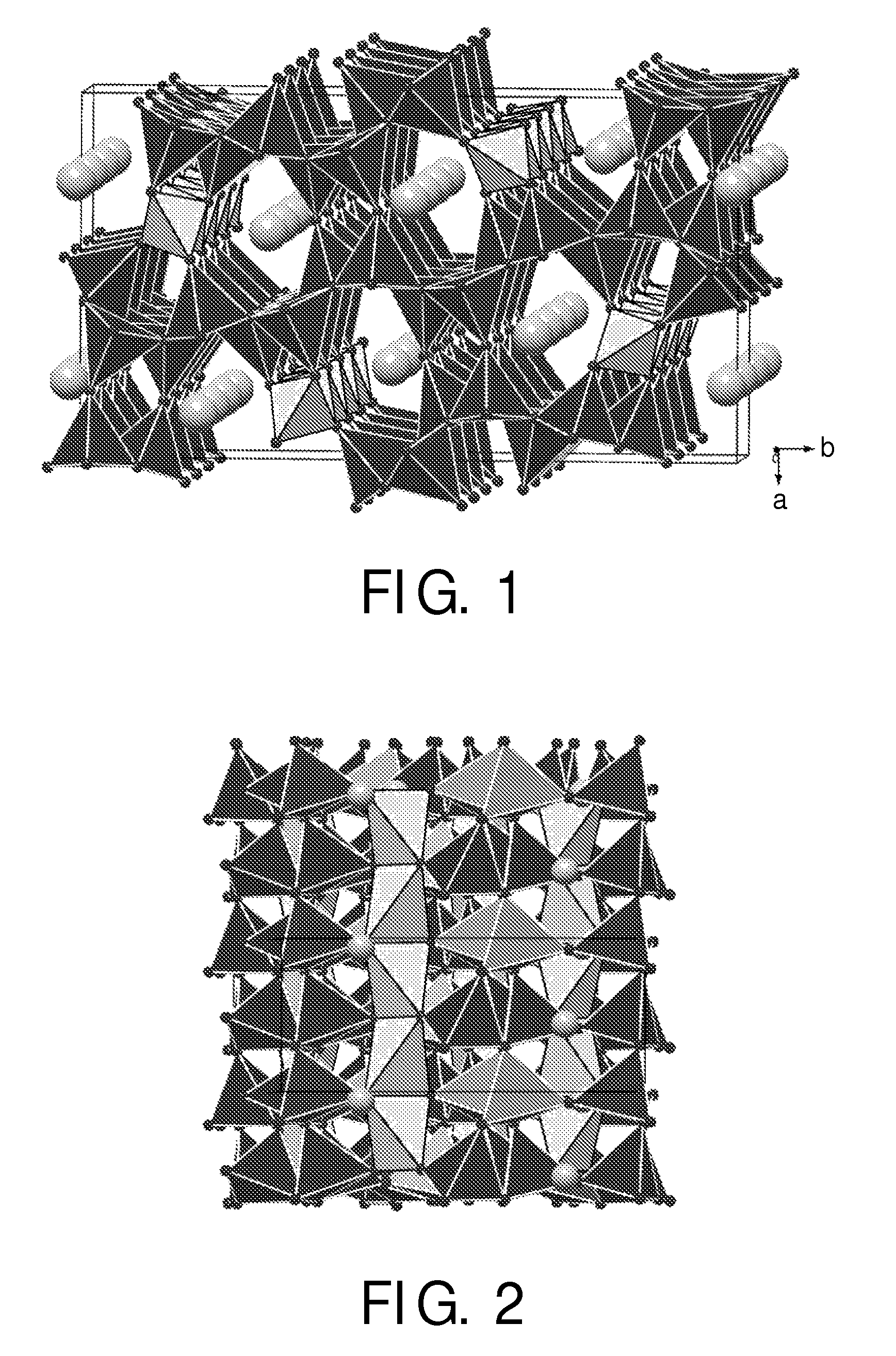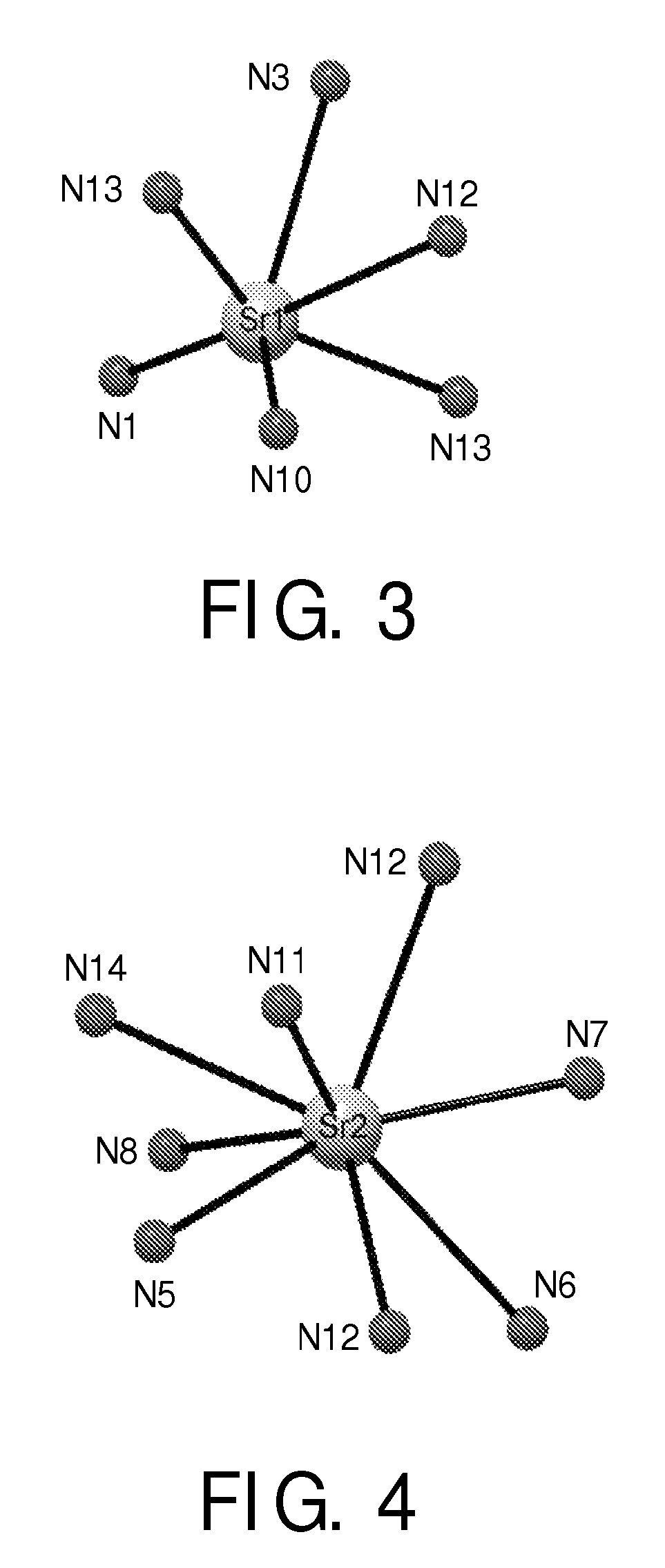Red emitting luminescent materials
a luminescent material and red-emitting technology, applied in the field of new luminescent materials, can solve the problems that trace amounts of additives may also be present in bulk compositions, and achieve the effect of increasing the luminescence and optical properties of at least one ceramic material
- Summary
- Abstract
- Description
- Claims
- Application Information
AI Technical Summary
Benefits of technology
Problems solved by technology
Method used
Image
Examples
example ii
[0079]FIGS. 5 and 6 refer to SrAlSi4N7: Eu(3%) which was made analogous to SrAlSi4N7: Eu(2%) (cf. Example I)
[0080]FIG. 1 shows a schematic perspective partial view of the host material of the structure of Example I, i.e. SrAlSi4N7, FIG. 2 shows the same structure from another perspective. It can be clearly seen, how the SiN4 and AlN4 tetraeders form lattices.
[0081]The exact crystal data can be seen in Table I:
[0082]
TABLE 1Crystal data of SrAlSi4N7.chemical formulaSrAlSi4N7molar mass / g · mol−1325.03crystal systemorthorhombicspace groupPna21 (No. 33)lattice parameters / pma = 1174.2(2), b = 2139.1(4), c = 496.6(1)cell volume / 106 pm31247.2(4)formula units in unit cell4
[0083]FIG. 3 and FIG. 4 show the M(1) and M(2)-sites in the material of example I, i.e. SrAlSi4N7: Eu(2%). It can be clearly seen that the two sites are different which has the believed effects as described above.
[0084]The exact data for the host material (i.e. the undoped SrAlSi4N7) is given in Table II:
[0085]
TABLE IIatomi...
PUM
| Property | Measurement | Unit |
|---|---|---|
| temperature | aaaaa | aaaaa |
| diameter | aaaaa | aaaaa |
| surface roughness | aaaaa | aaaaa |
Abstract
Description
Claims
Application Information
 Login to View More
Login to View More - R&D
- Intellectual Property
- Life Sciences
- Materials
- Tech Scout
- Unparalleled Data Quality
- Higher Quality Content
- 60% Fewer Hallucinations
Browse by: Latest US Patents, China's latest patents, Technical Efficacy Thesaurus, Application Domain, Technology Topic, Popular Technical Reports.
© 2025 PatSnap. All rights reserved.Legal|Privacy policy|Modern Slavery Act Transparency Statement|Sitemap|About US| Contact US: help@patsnap.com



